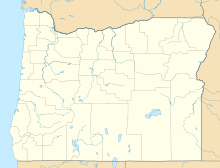
Henry Villard was an American journalist and financier who was an early president of the Northern Pacific Railway.
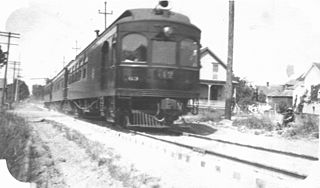
The Oregon Electric Railway (OE) was an interurban railroad line in the U.S. state of Oregon that linked Portland to Eugene. Service from Portland to Salem began in January 1908. The Spokane, Portland and Seattle Railway purchased the system in 1910, and extended service to Eugene in 1912. Regular passenger service in the Willamette Valley ended in May 1933. Freight operations continued and the railway survived into the 1990s, ultimately as a Burlington Northern feeder. Operation as an electric railroad ended July 10, 1945.
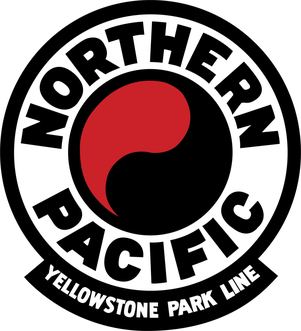
The Northern Pacific Railway was a transcontinental railroad that operated across the northern tier of the western United States, from Minnesota to the Pacific Northwest. It was approved by Congress in 1864 and given nearly 40 million acres of land grants, which it used to raise money in Europe for construction.
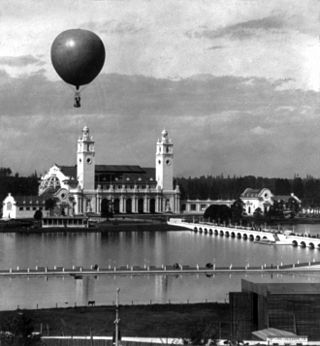
The Lewis and Clark Centennial Exposition, commonly also known as the Lewis and Clark Exposition, and officially known as the Lewis and Clark Centennial and American Pacific Exposition and Oriental Fair, was a worldwide exposition held in Portland, Oregon, United States in 1905 to celebrate the centennial of the Lewis and Clark Expedition. While not officially considered a World's Fair by the Bureau of International Expositions, it is often informally described as such; the exposition attracted both exhibits and visitors from around the world. During the exposition's four-month run, it attracted over 1.6 million visitors, and featured exhibits from 21 countries. Portland grew from 161,000 to 270,000 residents between 1905 and 1910, a spurt that has been attributed to the exposition.

The Willamette Falls Locks are a lock system on the Willamette River in the U.S. state of Oregon. Opened in 1873 and closed since 2011, they allowed boat traffic on the Willamette to navigate beyond Willamette Falls and the T.W. Sullivan Dam. Since their closure in 2011, the locks have been classified to be in a "non-operational status." In 2023, work began to repair the locks, which are expected to reopen in 2026.
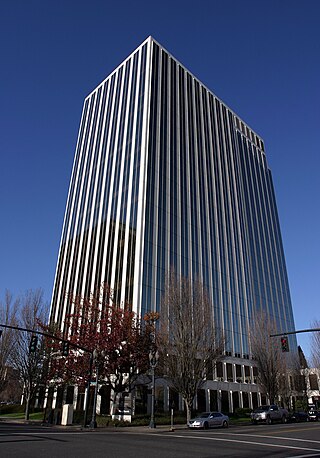
PacifiCorp is an electric power company in the western United States.

Henry Winslow Corbett was an American businessman, politician, civic benefactor, and philanthropist in the state of Oregon. A native of Massachusetts, he spent his early life in the East and New York before moving to the Oregon Territory. He was a prominent figure in the early development of Portland, Oregon, and was involved in numerous business ventures there, starting in general merchandise. His interests later included banking, finance, insurance, river shipping, stage lines, railways, telegraph, iron and steel and the erection of Portland downtown buildings among other enterprises. A Republican, he served as a United States senator from 1867 to 1873.

The Oregon Railroad and Navigation Company (OR&N) was a railroad that operated a rail network of 1,143 miles (1,839 km) running east from Portland, Oregon, United States, to northeastern Oregon, northeastern Washington, and northern Idaho. It operated from 1896 as a consolidation of several smaller railroads.

Latourell is an unincorporated community located in Multnomah County, Oregon, United States, on the Historic Columbia River Highway about eight miles (13 km) east of Troutdale and 5.5 miles (9 km) west of Multnomah Falls. Compared to its peak in the 1880s, it is now virtually a ghost town.
Rail transportation is an important element of the transportation network in the U.S. state of Oregon. Rail transportation has existed in Oregon in some form since 1855, and the state was a pioneer in development of electric railway systems. While the automobile has displaced many uses of rail in the state, rail remains a key means of moving passengers and freight, both within the state and to points beyond its borders.
Harry Verner Gates was an American engineer and politician in the state of Oregon. A native of Massachusetts, he later lived in Iowa worked on the railroads before settling in Hillsboro, Oregon, where he shifted to water projects. A member of the Republican Party, he served a single term in the Oregon House of Representatives. His former home in Hillsboro is the historic Rice–Gates House, and his former ranch in Central Oregon is now the Crooked River Ranch.
The history of rail in Oregon predates the transcontinental railroad in 1869.

Donald Macleay was a prominent 19th century merchant and banker in Portland in the U.S. state of Oregon. A native of Scotland, he emigrated at the age of 16 with his parents to the Canadian province of Quebec before relocating as an adult to California and, later, Oregon. With his business partner William Corbitt, he established a highly profitable wholesale and shipping business in Portland that centered on groceries and liquor, then wheat, salmon, and timber exports. He invested in Oregon railroads, served for a time as president of the Portland Board of Trade, and is generally credited with founding the U.S. National Bank of Portland, of which he was president toward the end of his life.

SS Columbia (1880–1907) was a cargo and passenger steamship that was owned by the Oregon Railway and Navigation Company and later the San Francisco and Portland Steamship Company. Columbia was constructed in 1880 by the John Roach & Sons shipyard in Chester, Pennsylvania for the Oregon Railway and Navigation Company.
The transportation system of Oregon is a cooperation of complex systems of infrastructure.
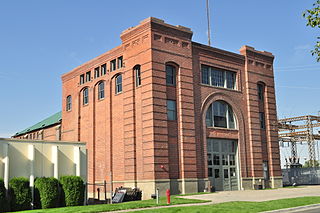
The Electric Light Works Building, also known as Gesa Power House Theatre, is a noteworthy building in Walla Walla, Washington that has aided in the growth and success of the city. It started out as a substation in the early 20th century, supplying Walla Walla with electricity. It was one of the first substations that converted hydropower to electricity in Washington state and is a good example of industrial architecture in the 1900s. Today it is as much a symbol of Walla Walla’s history as it is of the ever-changing culture of Walla Walla.

Relief was a stern-wheel steamboat that operated on the Columbia and Willamette rivers and their tributaries from 1906 to 1931. Relief had been originally built in 1902, on the Columbia at Blalock, Oregon, in Gilliam County, and launched and operated as Columbia, a much smaller vessel. Relief was used primarily as a freight carrier, first for about ten years in the Inland Empire region of Oregon and Washington, hauling wheat and fruit, and after that was operated on the lower Columbia river.
The following is a timeline of the history of Oregon in the United States of America.


